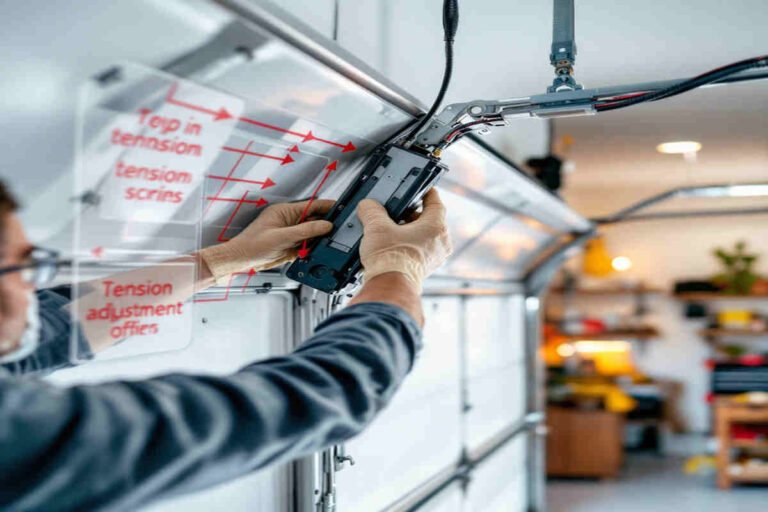Your garage door is one of the most critical components of your home. It provides security and convenience and boosts your property’s curb appeal. However, it can quickly become frustrating when your garage door isn’t working correctly. Common issues like the door not closing completely, hitting objects, or getting stuck can disrupt your day and pose safety risks.
In particular, up and over garage doors are popular for their ease of use and functionality. However, like any mechanical system, they require proper adjustment and maintenance to work smoothly. Knowing how to adjust up and over home garage door yourself not only saves you money but also ensures your door operates safely and efficiently.
Understanding Your Up and Over Home Garage Door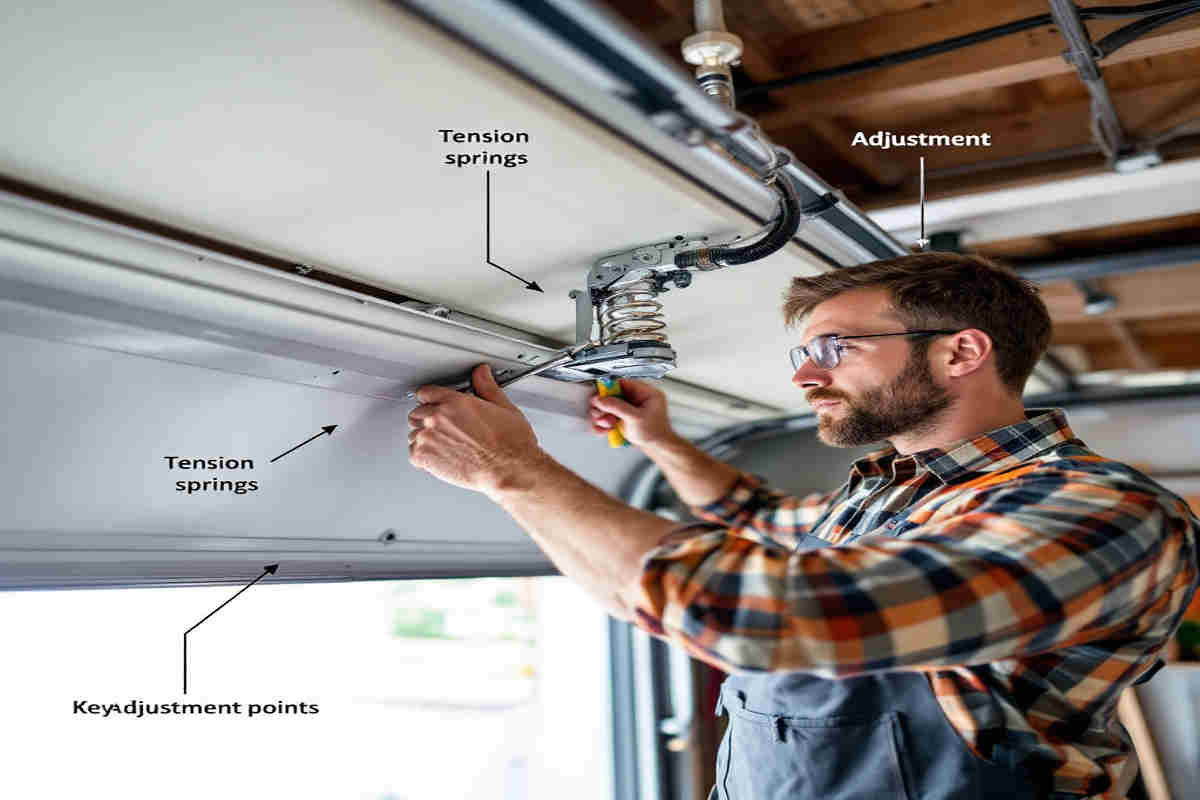
What Is an Up and Over Garage Door?
An up-and-over garage door is a type of door that swings outward and then lifts upward into the garage ceiling when opened. It’s a common choice for residential properties due to its simple design and affordability. These doors come in two main types:
- Canopy Style: When opened, a portion of the door protrudes outward, resembling a canopy.
- Retractable Style: The entire door retracts inside the garage, making it a better option for automation.
Key Components of an Up and Over Garage Door
To understand how to adjust your garage door, it’s essential to know its key components.
ComponentFunction
Door Panel: The main body of the door that swings open and closes.
Springs provide the tension to lift and lower the door (torsion or extension).
Track the guide as it moves up and down.
Cables help with lifting and stabilizing the door.
Opener: An optional motorized mechanism for automated operation.
Common Problems with Garage Doors
Misalignment or incorrect adjustment can lead to various issues, such as:
- The door is not closing fully or reversing unexpectedly.
- Uneven movement or sticking during operation.
- Strange noises like grinding or squeaking.
Safety First
Before attempting any adjustments, remember that garage doors are heavy and under tension. Mishandling them can lead to injuries. Always disconnect the power to the opener, secure the door, and wear protective gear. It’s best to hire a professional for adjustments involving torsion springs, as these components can be dangerous to handle.
Tools and Safety Precautions Needed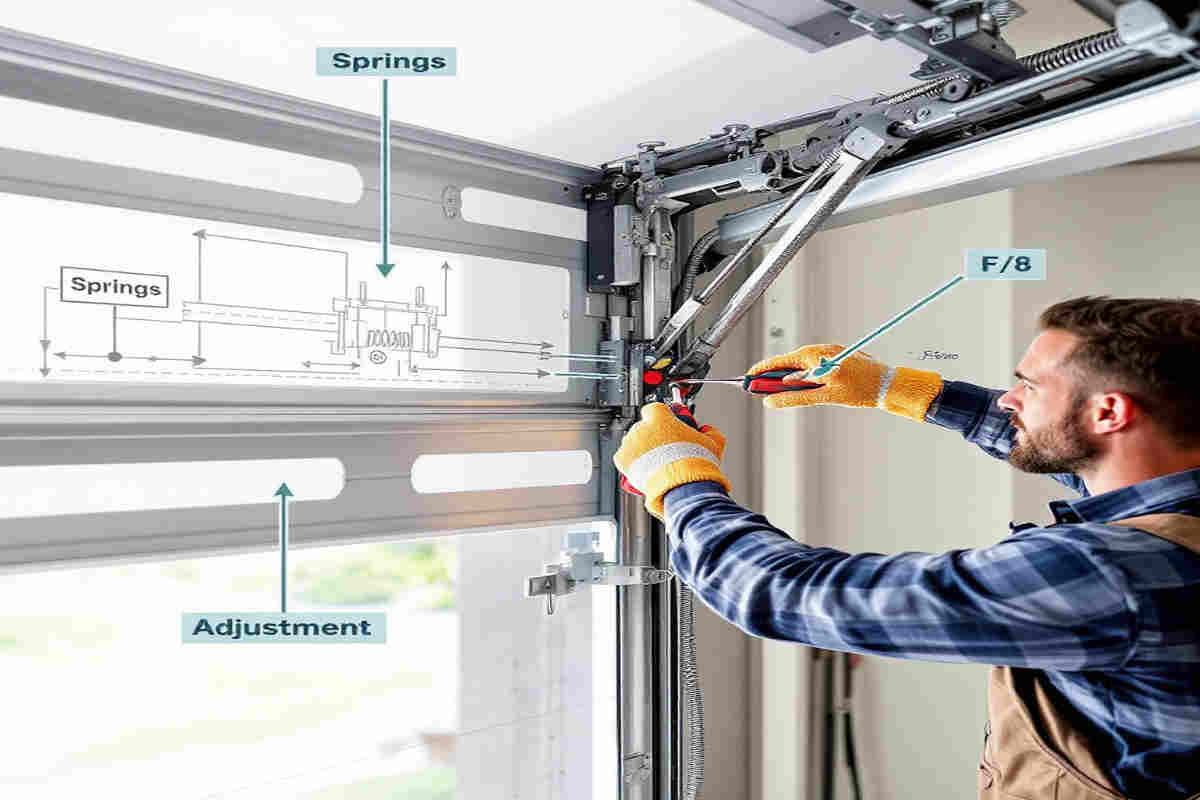
Essential Tools
Before you begin adjusting your garage door, gather the following tools:
You may also read (stuck house garage door).
- Flathead screwdriver
- Ratchet set
- Ladder
- Lubricant (garage door-specific)
- Work gloves
- Measuring tape
Having the right tools on hand will make the process smoother and safer.
Safety Tips
Your safety is the top priority when working with garage doors. Here are some precautions to take:
- Disconnect the Power: Unplug the garage door opener to prevent accidental activation.
- Secure the Door: Use clamps or locking pliers to hold the door while you work.
- Wear Protective Gear: Gloves and safety goggles can protect you from injuries.
- Work with a Partner: For heavy doors or complex adjustments, having someone assist you can reduce risks.
When to Call a Professional
While minor adjustments are manageable for most homeowners, specific tasks, like torsion spring adjustments, are best left to professionals. Torsion springs are under extreme tension and can cause serious injuries if mishandled.
How to Adjust the Garage Door Height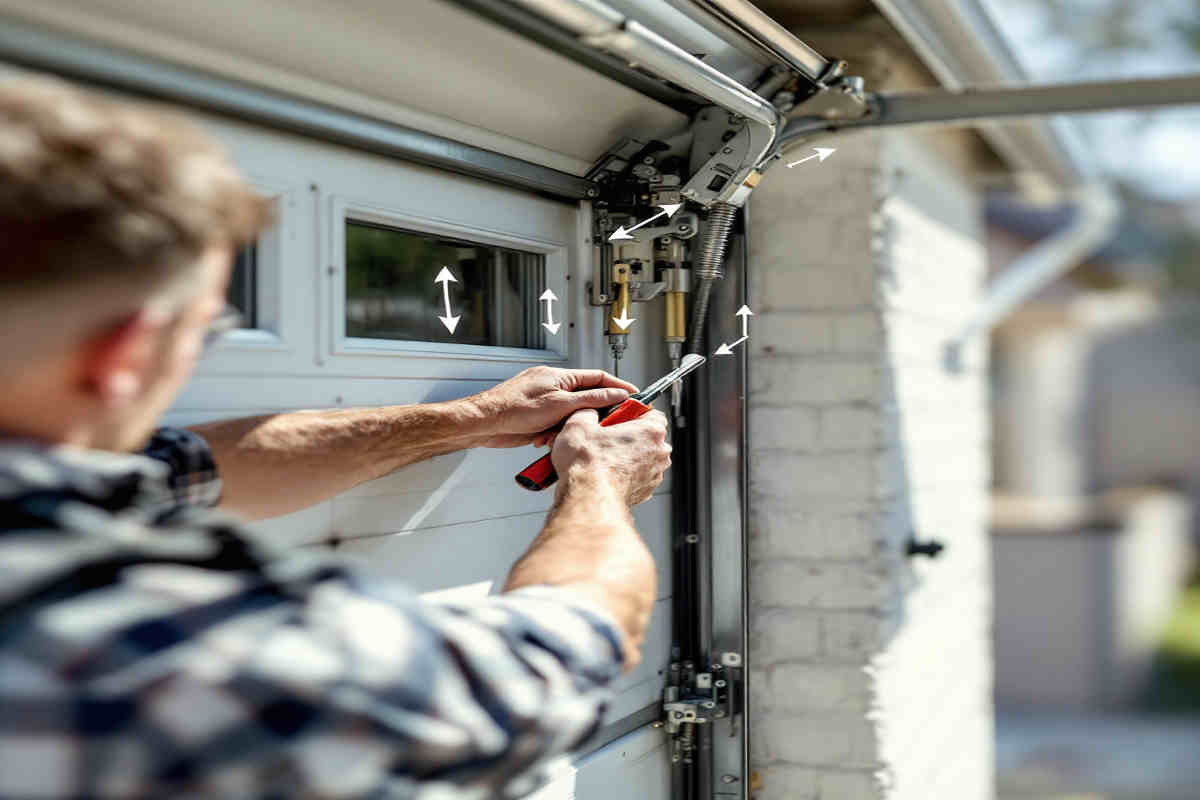
One of the most common adjustments homeowners need to make is changing the height of their garage door. This is especially important if you need more clearance for a taller vehicle or other equipment. Follow these steps to adjust the door height safely and effectively.
Locate the Adjustment Mechanism
Most garage doors have a metal bar or screw mechanism on the opener rail that controls the door’s height. This is typically found near the motor unit.
Loosen the Screws or Bolts
Using a flathead screwdriver or ratchet, loosen the screws or bolts holding the adjustment bar in place. Be careful not to loosen them too much, which could cause the door to fall.
Adjust the Height
Move the adjustment bar or screw to the desired position to increase or decrease the door’s height. Tighten the screws or bolts once the adjustment is made.
Test the Door
Manually open and close the door to ensure it moves smoothly and stops at the correct height. If the door doesn’t operate as expected, fine-tune the adjustment until it’s perfect.
You may also read (smart home upgrade).
Troubleshooting Common Issues
If you encounter problems during the adjustment:
- The door won’t stay open: Check the springs for proper tension.
- The door closes too quickly: The springs may need to be tightened.
- Door doesn’t reach the desired height: Re-adjust the metal bar or screw.
How to Adjust the Up and Down Travel Limits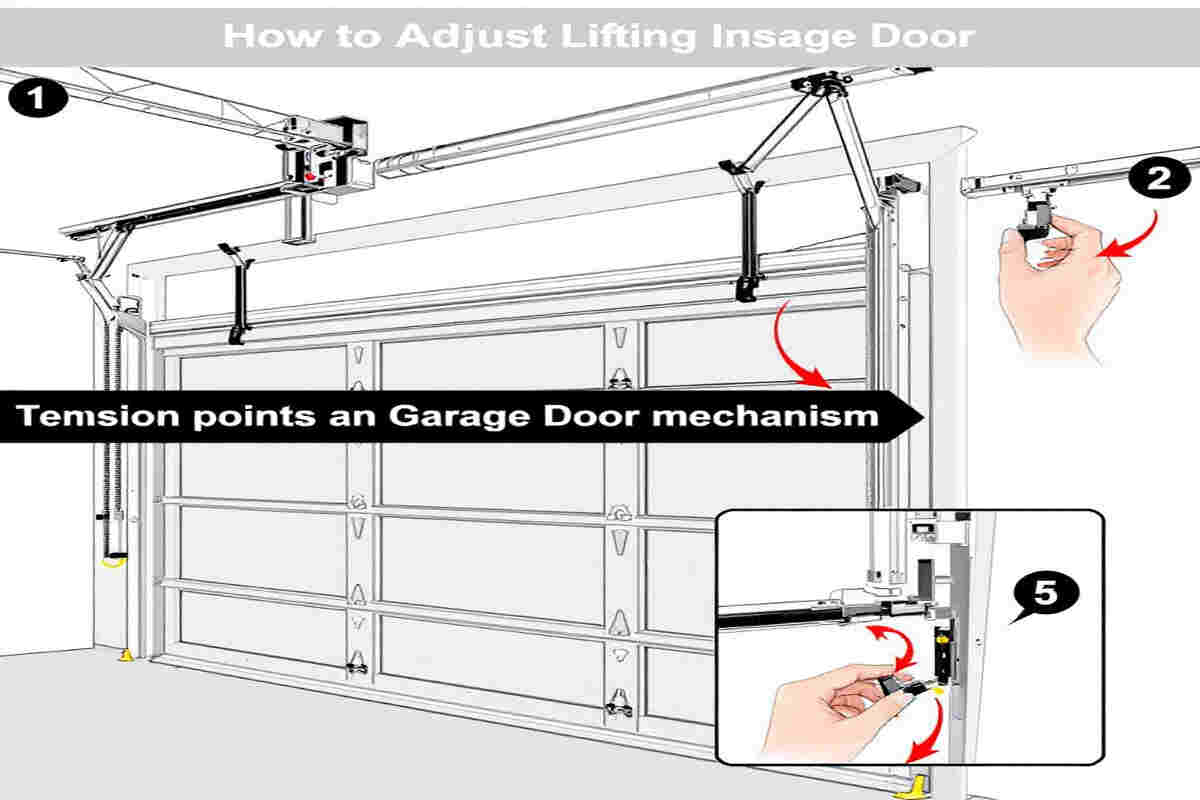
What Are Travel Limits?
The travel limits control how far the door moves when opening or closing. Incorrect settings can cause the door to stop too soon or reverse unexpectedly.
Adjusting the UP Travel Limit
- Locate the UP Limit Screw: This is usually found on the side of the opener motor.
- Turn the Screw: Turn it clockwise to increase the door’s upward travel or counterclockwise to decrease it.
- Test the Door: Open the door fully to ensure it stops at the correct position.
Adjusting the DOWN Travel Limit
- Locate the DOWN Limit Screw: This is also on the opener motor, typically next to the UP limit screw.
- Turn the Screw: Turn it counterclockwise to increase the door’s downward travel or clockwise to decrease it.
- Test the Door: Close it fully and check that it seals completely without reversing.
Balancing and Adjusting Garage Door Springs
Types of Springs
- Torsion Springs: Positioned above the door, these provide most of the lifting power.
- Extension Springs: These are found on the sides of the door and assist with lifting and balancing.
Checking Door Balance
To check if your door is balanced:
- Disconnect the opener and manually lift the door halfway.
- If the door stays in place, it’s balanced. If it falls, the springs need adjustment.
Adjusting Extension Springs
- Secure the door in place.
- Loosen the spring’s adjustment clip.
- Move the spring to increase or decrease tension.
- Tighten the clip and test the door.
Warning: For torsion spring adjustments, always call a professional.
Maintenance Tips to Keep Your Garage Door Operating Smoothly
Regular maintenance can prevent many common garage door issues. Here are some tips:
- Clean the Door and Tracks: Remove dirt and debris regularly.
- Lubricate Moving Parts: Use a garage door-specific lubricant on hinges, rollers, springs, and tracks.
- Check Screws and Nuts: Tighten any loose hardware to ensure stability.
- Replace Weather Strips: This improves insulation and protects your door from the elements.
- Inspect Annually: Look for signs of wear and tear, and repaint the door if needed.
You may also read (house garage doors cost).

